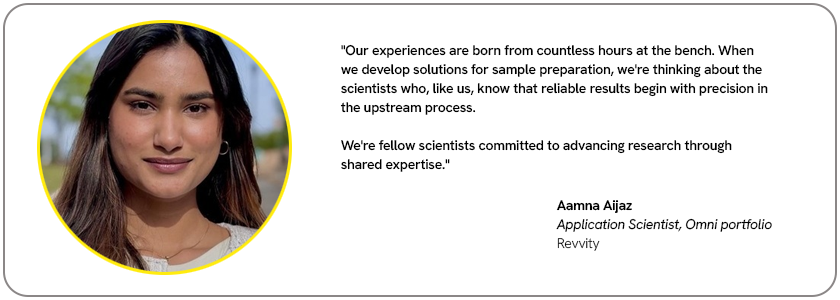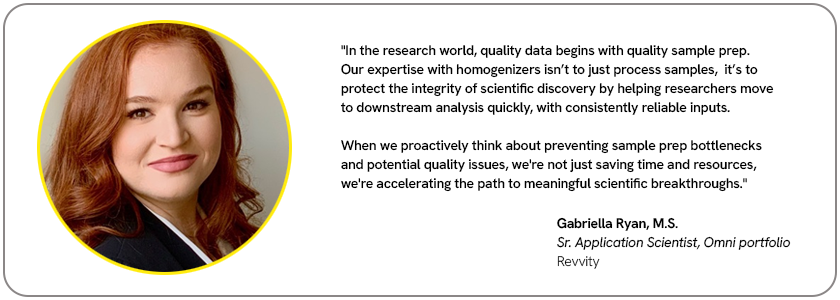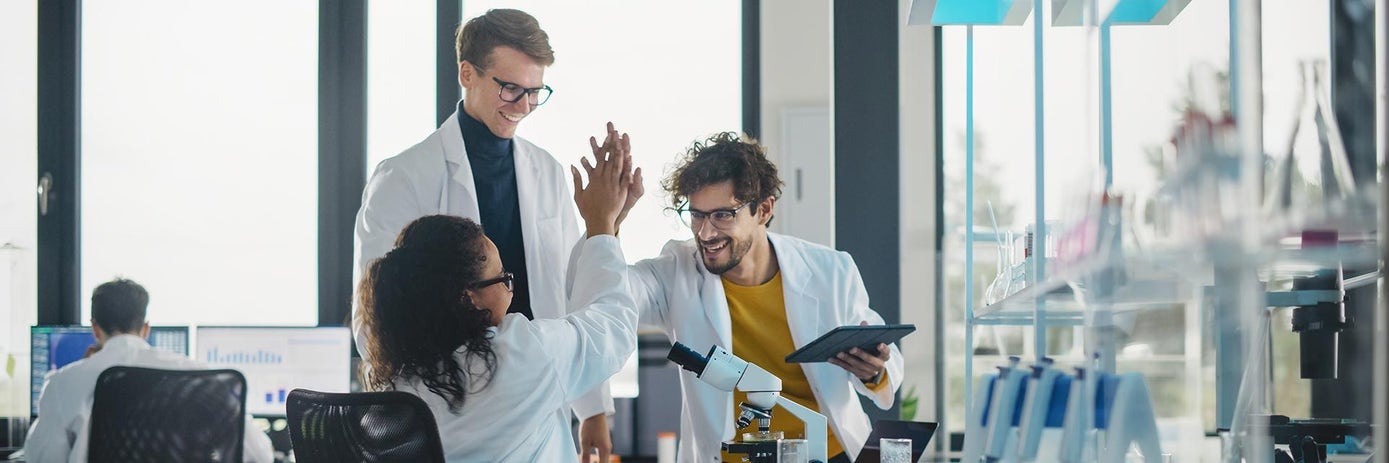
The laboratory – the hub of experimentation, of the curious-minded, and of data-driven decisions – plays such a irreplaceable role in a researchers saga for scientific truth. Different labs hums at their own pace, but the work at the bench, at the data-crunch, or at the critical review of a publication submission unifies those that love the work. Though just a small drop in its entirety, sample prep is a familiar term for folks intimate with lab- and bench-work. There is a general appreciation that for such a simple phrase, it entails various uniquely different stages.
The lines of separation may blur at times, but the same amount of care is taken when going from chain-of-custody and sample management – collection, transport, storage, and handling – through pre-analytical prep – assessment of highest possible methods of extracting analytes of interest in complex, unfinished, or volatile matrices – before even embarking on the ‘classic definition’ of analytical sample prep. And in the universe of lab testing or molecular analysis, the specifics and requirements of input yield, quantity, and purity depends on your downstream analyte and assay.
Though the degree or strictness within each step may vary on factors, regulations, or policies, the value each brings to boost confidence in a researcher’s scientific discovery is often an afterthought only because of an intangible trust that the people within each segment of the lab procedure is working at the same standard and good-faith system.
"This is the spirit of science we want to celebrate on this year’s World Laboratory Day – April 23!"
Talking to researchers in the field, one’ll see that science seeks an answer to a hypothesis about basically, yes, all-the-things (most importantly, their favorite thing). The question is answered with data and evidence to prove - or to prove inaccurate. When you peer into the next layer, the conversation of the ‘technology gap’ (or cap) comes to mind – is there a method? Is there multiple methods, but one that’s a cut above? If you’re ever lucky enough to be in that cusp of a paradigm shift – whether in science or in technology - it is a thing of marvel! One of the allures of an Original when thinking about technology adoption cycle is that you know they faced self-doubts, they faced scrutiny, and the string of 'are you sures?'.
The innovation and the confidence in the importance of their research question may have diverse origins, just like no two people are alike. The work and sweat equity that goes in from the laboratory perspective, however, needs to properly marry that spirit with due diligence in the experiments conducted within the scientific method, which can be complex.
As mentioned, within a workflow in the laboratory, no part is lesser or better than the other. And there would never be a completion, if any components were missing. The collective goal in the lab, however, is not to settle for suboptimal, but for continuous improvement. What might appear as the small, incremental steps not only help as a singular event, but will organically help lift the standard of the whole. You see this type of synergistic effect – a boost – from a catalyst in the lab, in the team, and in the process.

Studies generally exist that speak to the importance of pre-analytical prep, where predominantly for clinical lab workflows from biofluids such as blood, plasma, serum, or urine, sample collections are seen as having a high risk of the introduction of human error in pre-analytical stages, where improper labeling or say, mishandling in transport conditions can have a measurable effect on success or rejection rates. Similarly, multiple studies have seen the utility of and the implementation of quality indicators that can help reduce these forms of error1, 2, 3. Other errors can be harder to assess for root or collective cause, including – in this example – hemolysis. Was it introduced due to collection? Handling? If at the processing step, when? During the centrifugation or aliquoting for storage and preservation prior to processing? As researchers, hypothesizing for the most-likely variable is second nature and as process engineers, analyzing operational ‘blackholes’ is a skill set honed over the years of empirical observation and execution optimizing workflows.
The fringe of pre-analytical and analytical sample preparation
Now if you will, take a minute to focus in on this concept in clinical labs for total testing process (TTP). Prior focus on the analytical has, over the years, expanded into post-analytical assessment (think big data, data management, etc.) as well as the opportunity to assess and optimize the pre-analytical phase that could affect the reliability and confidence in lab results 3. This principle is not unique to clinical labs but also extend into pre-clinical research – from the basic to the translational domains – that directly impacts the clinical world of a soon-to-be companion diagnostics (CDX) or point-of-care testing (POCT) for personalized biotherapeutics, as well as the drug discovery and development pipelines near and dear to both small biotech and large biopharma alike.
Call us biased, but the idiom ‘Garbage in. Garbage out.’ - or GIGO - not only applies to data informatics or mediums related to information intake, it is also a common lament in the lab as it pertains to upfront or upstream sample prep. Hence, analyte extraction is one of the most critical aspects of your sample preparation workflow that could make or break your data. Barring drastic differences at time of sample collection or storage, proper analyte extraction from biospecimens sets a foundation for the rest of the analytical process. Proper upstream sample prep ensures that the samples are of high integrity/purity and yields are suitable within the required range of input for your downstream analysis (or distribution into aliquots for archiving or dilution).

Though liquid biopsies of non-invasive or minimally-invasive collection methods are an aspiration for the clinical labs, within the space of basic or pre-clinical research in academic, translational, or discovery labs, the world is your oyster (data-driven oyster) on the plethora of sample types you might want to assay or you may have requests to analyze from. Examples range from biological samples like yeast or drosophila for model organisms and small animal soft or hard tissues within ADMET studies, among others.
These tough matrices or inhomogeneous samples require upfront homogenization for uniformity and particle-size reduction, which is essential for downstream analyte extraction – whether nucleic acid, protein, small molecule, et al. There are many routes to achieve an end-point; in our example, mechanical disruption, sonication, or enzymatic digestion, where researchers need to consider factors such as tissue type or the desired compatibility with the extraction method, which in turn considers variables such as effectiveness/yields, threshold levels of assay contaminants or inhibitors, etc.
The impact on cost efficiency, workflow efficiency, job satisfaction, time to results, are among the outputs that labs could enjoy when adopting indicators to assess for quality and metrics of efficiency and then acting on these quantifiable observations in the quest for reliable and analytically-reproducible results, while keeping potential error or inconsistencies out of this phase of sample prep. Investing time and resources at the front-end to optimize GIGO, along with protocol standardization leveraging automation where it makes sense and ensuring training of personnel are all things that could help a laboratory and its people in all capacities.
Circling back, we again want to celebrate those who help support the laboratory ecosystem on World Laboratory Day. No doubt, it takes a community – the people, the tools, and the support system – to properly back our researchers seeking a healthier tomorrow. As with life out of the lab, in the lab, don’t get stuck in the weeds but don’t forget the importance of that first step.
References:
- Guru, R. R., Bora, I., Kumar, B. S., Sangat, S. K., Mitra, S., Dutta, V., Kumar, R., Dalai, S., Bhanap, P., & Sharma, M. (2025). Streamlining Molecular and Serology Laboratory Operations: A Lean Six Sigma Approach. Cureus, 17(3), e80038. doi.org/10.7759/cureus.80038
- Giménez-Marín A, Rivas-Ruiz F, del Mar Pérez-Hidalgo M, Molina-Mendoza P. Pre-analytical errors management in the clinical laboratory: a five-year study. Biochem Med (Zagreb). 2014;24:248-257
- Nordin, N., Ab Rahim, S. N., Wan Omar, W. F. A., Zulkarnain, S., Sinha, S., Kumar, S., & Haque, M. (2024). Preanalytical Errors in Clinical Laboratory Testing at a Glance: Source and Control Measures. Cureus, 16(3), e57243. doi.org/10.7759/cureus.57243
For research use only. Not for use in diagnostic procedures.

































